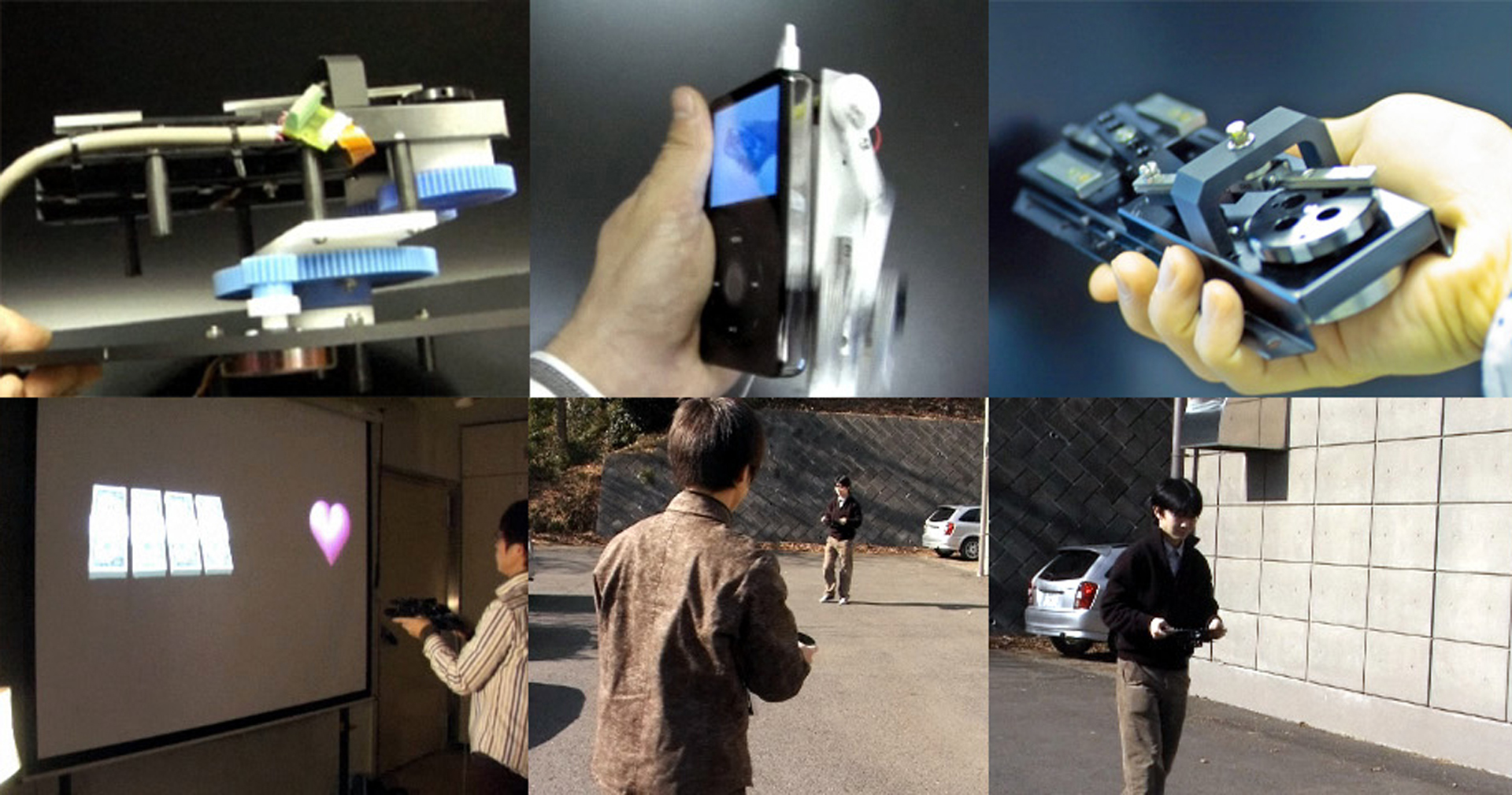“Perceptual Attraction Force: The Sixth Force” by Amemiya, Ando and Maeda
Conference:
- SIGGRAPH 2006
-
More from SIGGRAPH 2006:


Type(s):
Entry Number: 26
Title:
- Perceptual Attraction Force: The Sixth Force
Presenter(s):
Description:
We introduce a novel handheld force feedback device that utilizes the nonlinearity of human haptic perception; rapid and slow acceleration yield different sensations. The device generates asymmetric acceleration in one cycle, a pushing or pulling sensation. Three demonstrations will show the nonverbal communication made possible by the device.
We have utilized the nonlinear characteristics of human haptic perception to develop a handheld force feedback device; humans feel rapid acceleration more strongly than slow acceleration. We designed and built a crank-slider mechanism that creates a periodic prismatic motion with asymmetric acceleration (strong in one direction and weak in the other) leading to a ”virtual” force sensation. The prototype of the handheld device generates a sensation of unidirectional force; humans perceive a uni-directional force although the device physically generates a bi-directional force. By using a motor to pan the crank-slider mechanism, the device unit can create a virtual force in any arbitrary direction on a two dimensional plane. The direction of force can be controlled with angular sensors. We will present three applications of ”perceptual attraction force”; (1)attraction = magnet, (2)attraction = Newton’s apple, and (3)attraction = personal charm.
Other Information:
References
SUZUKI, Y., KOBAYASHI, M., AND ISHIBASHI, S. 2002. Design of force feedback utilizing air pressure toward untethered human interface. In Proceedings of CHI ’02 Extended Abstracts on Human Factors in Computing Systems, ACM Press, 808–809.
TANAKA, Y., MASATAKA, S., YUKA, K., FUKUI, Y., YAMASHITA, J., AND NAKAMURA, N. 2001. Mobile torque display and haptic characteristics of human palm. In Proceedings of ICAT 2001, 115–120.
YANO, H., YOSHIE, M., AND IWATA, H. 2003. Development of a non-grounded haptic interface using the gyro effect. In Proceedings of HAPTICS 2003, IEEE Computer Society, 32–39.





